
The Clean Energy Revolution: Exploring the sustainable solutions that shape our new world
The world is changing rapidly, and the search for sustainable solutions has become more urgent than ever. Clean energy is the key to a brighter future.
Construct Vision Team
1/13/202520 min read
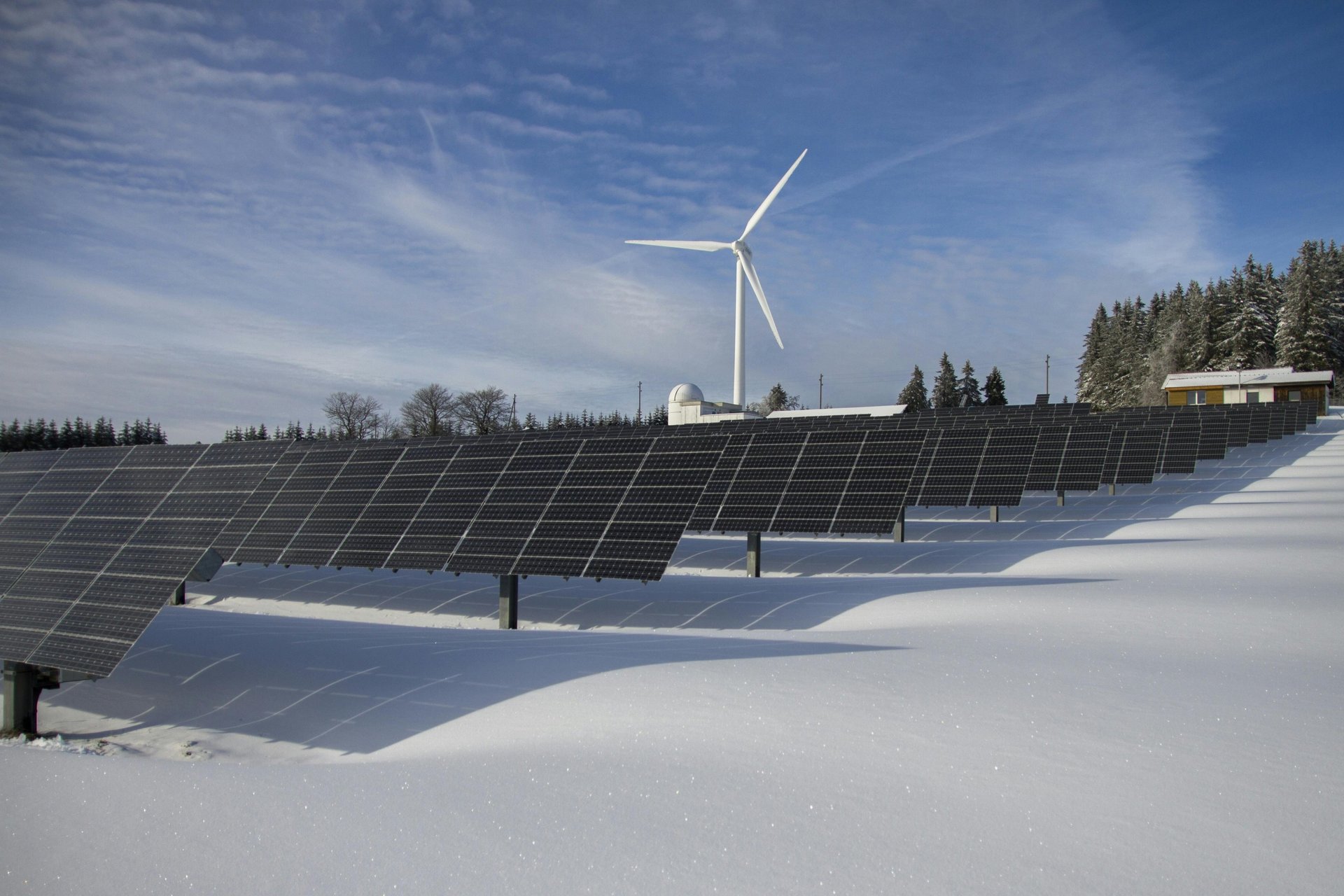
Introduction:
As global demand for energy continues to rise, attention turns towards clean and sustainable sources to strike a balance between development and the environment.
In this article, we explore the most important clean energy technologies that are reshaping our future, along with a glimpse at promising alternatives seeking to emerge on the scene.
The world is changing rapidly, and the search for sustainable solutions has become more urgent than ever. Clean energy is the key to a brighter future.
New Pillars of Global Energy: Clean Sources Transforming the Production Landscape and Supporting Sustainability!!
1. Solar Energy: An Unfailing Sun
Did you know that the sun provides us with enough energy in one hour to power humanity for an entire year? Yet, the world still heavily relies on polluting fossil fuels.
Solar energy is the largest source of renewable energy, and it is considered the most sustainable. It can be harnessed to generate electricity and heating. The cost of solar energy has decreased by 80% over the past decade. It is a fully renewable energy source capable of providing electricity even in remote areas.
Solar energy has proven its worth in recent years, and it continues to be the most readily available solution in different conditions and crises that have affected many regions on our planet, with energy shortages being one of the most prominent problems.
There are two main types of solar systems: conventional and concentrated, each with its own advantages and disadvantages, making it suitable for specific applications.
Conventional Solar Cells (PV)
They rely on converting light directly into electricity using solar cells made of semiconductor materials such as silicon. They consist of solar panels made up of a group of solar cells connected to each other. The efficiency of conventional solar cells ranges from 15% to 20%.
This type of system is easy to install and maintain, and it is available at affordable prices. One of its advantages is that it works well in low-light conditions.
However, it requires a large area to produce a large amount of energy, and its efficiency is lower compared to concentrated systems.
Among the largest and most important solar power plants in the world today:
1. "Al Dhafra Solar Photovoltaic Power Plant" - United Arab Emirates: With a capacity of 2 GW, it is the largest independent solar power plant in the world to date. Located in Abu Dhabi, it contributes significantly to reducing carbon emissions.
2. "Nour Abu Dhabi" - United Arab Emirates: With a capacity of 1.2 GW, it was the largest individual solar power plant in the world upon its launch. Located in Abu Dhabi, it meets the electricity needs of hundreds of thousands of homes with clean energy.
3. Mohammed bin Rashid Al Maktoum Solar Park - Dubai: With a targeted capacity of 5 GW by 2030 (currently over 1.5 GW), it is one of the largest multi-stage solar projects in the world.
4. "Nour Ouarzazate" - Morocco: With a capacity of 580 MW (with expansion potential), it is the largest concentrated solar power (CSP) plant in the world. It is a global model for investing in clean energy in Africa.
5. Xinjiang Solar Farm - China: With a capacity of approximately 2 GW (estimated, may expand in the future), it supports local grids and achieves carbon reduction goals.
6. Kamuthi Solar Power Station - India: With a capacity of 648 MW, located in Tamil Nadu, India, it generates electricity for approximately 265,000 homes in Tamil Nadu.
7. "Shams" Power Plant - United Arab Emirates: With a capacity of 100 MW, it is one of the first concentrated solar power (CSP) plants in the region. Located in Abu Dhabi.
Power plants that may be larger or expand further:
- "Bhadla Solar Park" - India: With a capacity of over 2.25 GW, located in Rajasthan, India, it is currently the largest solar power plant in the world in terms of installed capacity. It contributes significantly to making India a global center for solar energy.
- "Alfarra Solar Power Plant" - China: With a capacity of over 2.2 GW, located in Qinghai Province, China, it is part of China's plan to transform its remote provinces into large solar energy centers.
- "Gubali Solar Energy Project" - India: With a planned capacity of 3 GW (under construction), located in Gubali, India, it may become the largest individual solar power plant upon completion.
- "Nevada Desert Solar Energy Project" - United States: With a capacity of approximately 1.9 GW (estimated), located in Nevada, United States, it is a strategic project to support the American electricity grid with clean energy.
The Future of Solar Energy:
The solar energy sector is expected to experience rapid growth in the coming years, driven by technological developments, cost reductions, and increased awareness of the importance of renewable energy.
The solar energy sector faces several challenges, including the fact that it is still more expensive than some traditional energy sources. There is also the issue of storage, as solar energy cannot be easily stored, requiring the development of effective storage solutions. Another challenge is the integration with the electricity grid, as integrating large amounts of solar energy into the electricity grid requires significant modifications to the infrastructure.
2. Wind Energy: Harnessing the Wind for Our Benefit
A reliable source of renewable energy, where wind kinetic energy is converted into electrical energy through wind turbines, which convert wind movement into mechanical energy that rotates an electric generator.
In many smart cities and sustainable architectural projects, wind energy is utilized to reduce operating costs and reduce carbon emissions.
Wind farms require large areas of land, especially for large projects. Therefore, it is possible to take advantage of land that is not suitable for agriculture, such as coastal areas or deserts. Wind farms also need areas with strong and continuous winds. Coastal areas, hills, and open areas in general are usually the best for generating wind energy.
The cost of generating wind energy has decreased significantly in recent years with technological development, making it competitive with traditional energy sources in many regions.
Denmark produces approximately 50% of its electricity needs from wind energy.
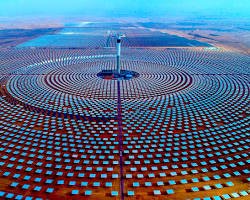

One of the most important wind farms, which is a role model, is the United Kingdom's experience in this field:
Hornsea 2 Power Station: Located off the east coast of the United Kingdom in the North Sea, about 89 kilometers from the east coast of Yorkshire in England. It is considered one of the largest offshore wind power plants in the world, and this power station represents a huge technical and environmental achievement as part of the transition to clean energy sources.
The power station has a capacity of 1.3 GW, which is sufficient to supply approximately 1.3 million homes with clean electricity. The power station contains 165 turbines of the "Siemens Gamesa SG 8.0-167 DD" model. Each turbine is approximately 200 meters tall.
The power station covers an area of 462 square kilometers, and the cost of the project was approximately $6 billion US dollars.
The power station contributes significantly to achieving the United Kingdom's goal of reaching zero carbon emissions by 2050. It is an essential part of the government's plan to expand offshore wind power capacity to 40 GW by 2030.
The power station is expected to contribute to reducing carbon dioxide emissions by 1.6 million tons per year, which is equivalent to removing approximately 800,000 cars from the roads annually.
The power station uses advanced technologies in energy transmission and distribution, including a high-voltage offshore cable system to connect electricity to the United Kingdom's grid.
Hornsea 1: It was previously the largest offshore wind power plant in the world with a capacity of 1.2 GW. Hornsea 2 surpassed Hornsea 1 to become the largest with a capacity of 1.3 GW, with an improvement in efficiency and an increase in productivity.
Hornsea 3 and 4: Planning is underway for Hornsea 3 and 4 phases, which are expected to significantly increase offshore wind power capacity in the region.
For more extensive information on this topic, read our article (How Does Wind Power Drive the Wheel of Innovation in Sustainable Architecture?) to expand on this very important axis.
3. Geothermal Energy: Treasures of the Earth's Interior (Treasures of Heat Under Our Feet)
Geothermal energy is the thermal energy stored in the Earth's interior. It is a renewable energy source that is extracted from the heat present under the Earth's surface. It is utilized using specific techniques to convert geothermal heat into usable thermal or electrical energy.
Geothermal energy is often used to generate electricity, where hot steam or water can be used to rotate turbines for electricity generation. It is also used for heating, where hot water can be used directly to heat buildings and homes. It is also used in agriculture in cold regions to provide a warm environment for crops.
Geothermal energy is characterized as a renewable energy source that does not deplete. It is environmentally friendly, as it does not produce any harmful emissions. It is reliable, and its generation can continue throughout the year, regardless of weather conditions.
Investing in geothermal energy is not without challenges, such as cost, where establishing geothermal power stations requires large investments. The locations of power stations are also a challenge, as geothermal energy is not available in all areas, requiring the presence of thermal sources close to the surface. There are also some environmental impacts due to drilling and extracting hot water, as deep drilling may cause small earthquakes or release trapped gases.
The future:
Geothermal energy is one of the most important renewable energy sources that can contribute to achieving global sustainability goals. With continuous technological developments, it is expected that the efficiency and cost competitiveness of geothermal energy will increase in the future."
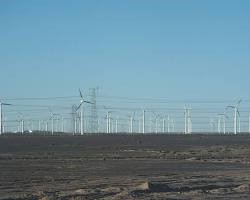

A glimpse at the extraction and investment mechanism:
Sites with high geological activity (such as fault zones and volcanoes) that contain hot groundwater or extremely hot rocks are selected. Then, geophysical surveys are conducted using seismic imaging and remote sensing to identify geothermal energy pockets.
Wells ranging from 1 to 3 kilometers deep are drilled to reach hot water reservoirs or steam. Geothermal energy systems are of two types: (hot water reservoirs: contain extremely hot water, and dry hot rocks: require water injection to produce steam).
Geothermal energy investment systems rely on converting heat into electrical energy or using heat directly. To ensure the sustainability of the source, cold water resulting from cooling is re-injected into the ground to maintain pressure in the geothermal reservoir.
Successful experiences:
- "Hellisheidi" Geothermal Power Station in Iceland: One of the largest geothermal power stations in the world, with a capacity of 300 MW, which is sufficient to supply 120,000 homes.
- Kenya: Kenya has successfully integrated geothermal energy into its electricity mix, where it constitutes 47% of its renewable energy. This success is a model for harnessing the potential of this clean source in the African continent.
- Indonesia: Indonesia is a leading country in this field, where it has witnessed an increase in geothermal power production capacity by 193 MW.
- China: Sinopec launched the first experimental geothermal energy production project, connected to the electricity grid, reflecting technological progress in this field.
- Geysers Power Station in California: The largest geothermal power project in the world with a capacity of 725 MW, producing enough electricity to power 725,000 homes. Using dry systems and geothermal steam, the United States is generally the world leader, with a capacity exceeding 3.7 GW.
Global statistics:
The installed geothermal energy production capacity worldwide was approximately 14,877 MW in 2022, compared to 14,696 MW in 2021, indicating continuous growth in this sector.
It is expected that the geothermal energy production capacity will increase by 92% to reach 27 GW, if all announced projects under development are implemented.
Geothermal energy currently contributes less than 1% of the global demand for electricity, and most production is concentrated in countries such as the United States, Indonesia, and the Philippines.
The cost of producing electricity from geothermal energy ranges between $0.05 and $0.10 per kilowatt-hour.
With technological progress and increasing interest in renewable energy, there are great opportunities to expand the use of geothermal energy, especially in areas with high geological activity.
4. Hydroelectric Power (Hydropower): The Mighty Power of Water
It relies on exploiting the movement of water (rivers, waterfalls, and dams) to operate turbines and generate electricity. It is considered one of the most widely used sources of renewable energy worldwide.
It is sustainable as long as rivers and freshwater continue to exist. It is a reliable and suitable source of energy for areas with abundant water resources.
However, excessive dam construction may impact ecosystems.
Dams are built on rivers or reservoirs to store large quantities of water. The water stored in the dam contains potential energy due to its height.
When the dam gates are opened, water flows forcefully downward through dedicated pipes. The force of the water flow is converted into kinetic energy. The flowing water drives the blades of turbines connected to an electric generator. The movement of the turbines converts kinetic energy into mechanical energy. The electric generator uses mechanical energy to generate electricity, producing an electric current.
Pumped Hydroelectric Energy Storage is an advanced technology used to store and produce energy on demand. It acts as a "large battery" that uses water to store electricity. When there is an excess of electricity (such as during periods of low demand or the presence of excess renewable energy from the sun or wind), electricity is used to operate pumps that transfer water from a low-lying reservoir to a higher reservoir. This process stores energy in the form of potential energy in the water in the upper reservoir.
Today, the hydroelectric power production capacity is approximately 1,270 GW. In 2015, hydroelectric power generated 16.6% of the total electricity in the world and 70% of the total renewable energy produced. China leads the list of hydroelectric power-producing countries with a capacity of 391 GW, followed by Brazil (109 GW), the United States (102 GW), and Canada (82 GW).
Notable hydroelectric power stations:
Three Gorges Dam - China: With a production capacity of approximately 22.5 GW, located on the Yangtze River, Hubei Province. It is considered the largest hydroelectric power station in the world in terms of production capacity.
Itaipu Dam - Brazil/Paraguay: With a production capacity of 14 GW, located on the Parana River on the border between Brazil and Paraguay. It was the largest hydroelectric power station in the world before the construction of the Three Gorges Dam.
Fengning Pumped Hydroelectric Power Station - China: With a production capacity of 3.6 GW, located in Hebei Province. It is the largest pumped hydroelectric power station in the world, used for energy storage and network regulation.
Ruvuma Dam in Tanzania: A modern $2.9 billion project that provides electricity to millions of people.
Small Hydropower Projects: Small hydroelectric power stations are established for rural communities, as is the case in local project experiments in Norway.
Hydroelectric power is a renewable and clean source of energy. It does not produce carbon emissions during operation because it does not burn any fuel, relying entirely on the natural water cycle. It is characterized by the stability of the electricity network, providing the ability to meet peak demand due to the ability to control water flow. Hydroelectric power stations have an operational lifespan that extends for decades with periodic maintenance.
However, investing in it in an unorganized manner may impact ecosystems and natural habitats. It also requires large investments in infrastructure. It is affected by climate change, as it relies on the availability of water, making it sensitive to drought and climate change.
5. Ocean Energy
Ocean energy is considered a promising source of renewable energy, where the natural movement of water is exploited to generate electricity. This energy includes several technologies, such as wave energy, tidal energy, ocean thermal energy, and salinity energy.
Mechanisms of Ocean Energy Generation:
Wave Energy:
It benefits from the movement of surface waves to operate electric generators, either:
Using floating buoy technology that moves with the waves. This movement is used to move hydraulic pistons or turbines that generate electricity.
Or underwater fixed devices that exploit changes in pressure resulting from waves. These pressure changes push air or water through turbines to generate electricity.
Or shore-based devices that use wave movement to push air through closed pipes. Compressed air drives turbines that generate electricity."
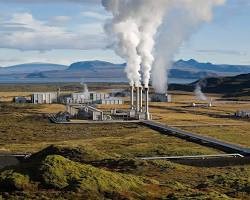

Tidal Energy:
It relies on differences in water levels between high and low tides to generate electricity, either through tidal barrages that hold back water during high tide and release it through turbines during low tide. Or through turbines installed on the seabed that exploit tidal currents.
The "Sihwa" Tidal Power Station - South Korea - is considered the largest tidal power station in the world with a production capacity of 254 MW.
The "MeyGen" Project - Scotland - is the first tidal power station aimed at developing a production capacity of up to 398 MW by exploiting tidal currents.
Ocean Thermal Energy Conversion (OTEC):
It exploits differences in temperatures between the surface of the ocean and the depths to operate a thermal cycle that generates electricity. Surface warm water and deep cold water are transferred through heat exchangers to operate turbines.
This technology is considered a renewable and sustainable source of energy, especially in tropical regions.
The latent thermal energy in the oceans is estimated at approximately 100,000 terawatt-hours per year. Tropical regions (between latitudes 23.5 degrees north and south) are the most suitable for application due to the large difference in temperatures between the surface and the depth.
Global Projects:
The "Kauai" Project in Hawaii, United States, with a capacity of 105 kilowatts.
The OTEC station in Japan to provide energy to remote islands.
The OTEC project in South Korea aims to produce 20 MW by 2030.
Projects in the Maldives to generate energy and produce freshwater.
Challenges facing these technologies include high costs in establishing infrastructure compared to other energy sources. Limited geographical location, as it depends on the availability of a large temperature difference, making it limited to tropical regions. In addition to the environmental impact, as pumping cold water from the depths may affect the marine environment and ecological balance.
However, with advancements in thermal turbine technologies and cost reduction, it may become a strong competitor to other renewable energy sources. Combining energy production and water desalination enhances the economic value of these projects."

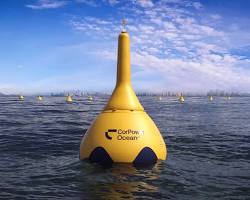
Salinity Gradient Energy:
It benefits from differences in salt concentration between saltwater (such as seawater) and freshwater (such as river water) to generate electricity through special membranes.
Salinity gradient energy relies on the difference in salt concentration between saltwater (such as seawater) and freshwater (such as river water). When these two types of water meet, the difference in concentration can be exploited to produce energy.
The theoretical potential of salinity gradient energy is estimated at approximately 2 terawatts worldwide, which is enough to supply the world with approximately 10% of its electricity needs.
Potential suitable sites include river deltas (such as the Mekong River in Vietnam) and large river mouths.
Challenges include the high cost of special membranes and their low operational lifespan. Difficulty in commercial expansion compared to other energy sources.
Global Ocean Energy Production Capacity:
The global potential for ocean energy is estimated at more than 20,000 terawatt-hours per year.
Estimates indicate that wave energy can generate 8,000 terawatt-hours per year, while ocean thermal energy can generate approximately 10,000 terawatt-hours per year.
The global ocean energy production capacity was approximately 548 megawatts in 2020, with tidal barrage technology dominating at 521.5 megawatts.
Other capacities are distributed among tidal current technologies (10.6 megawatts), wave energy (2.31 megawatts), ocean thermal energy conversion (0.23 megawatts), and other technologies (13.2 megawatts).
It is expected that the ocean energy production capacity will reach 10 gigawatts by 2030.
Europe leads in developing ocean energy projects, accounting for 55% of projects under development, followed by Asia and the Pacific region at 28%.
6. Gravity Energy
It is a modern energy storage technology under development to find long-term energy storage solutions. It relies on storing energy by lifting heavy masses to certain heights using electrical energy, and then releasing them when energy is needed to generate electricity due to gravity. This drives an electric generator through turbines or cable and pulley systems. Some companies are working on using this idea in special energy storage towers, such as storing energy in abandoned mines or towers specifically designed to lift and lower masses.
Converting gravity energy into electricity is an emerging concept for using gravity as a means of storing energy and converting it into electricity later. It is similar in principle to pumped hydropower storage stations (Pumped Hydropower Storage) that we mentioned earlier.
For example, the company "Energy Vault" - Switzerland: It relies on lifting concrete masses using cranes when there is an excess of energy, and generating electricity by releasing them downward when needed. This provides energy of up to 35 megawatts with long-term storage capacity. The expected performance is an efficiency of 80-90% of the stored energy.
Future Potential:
This technology is a means of storing clean energy as an alternative to chemical batteries, especially in remote areas or areas lacking the appropriate conditions for other energy sources. There is a study by the International Energy Agency (IEA) indicating that gravity energy storage may contribute significantly to supporting future electricity networks.
Challenges facing this technology include space and infrastructure, as it requires large areas or specific sites such as abandoned mines or dams. Relatively high initial costs compared to chemical batteries. In addition, the effectiveness of the systems depends on the design in terms of the size of the weights and the height of the fall.
With the development of technologies and the expansion of projects, it may become an effective alternative or complement to other storage systems such as batteries.
Sustainable Sources with Proper Management
Biomass Energy:
It relies on using organic materials (crops or plant and animal waste and by-products of food industries) to convert them into energy. Through direct burning or mechanical/chemical/biological processing to produce biofuels such as ethanol and biodiesel (Biogas), to produce methane from organic waste.
It is a renewable source that helps manage waste in a sustainable manner. It relies on organic materials such as plants and animal waste. It is sustainable if the sources are renewed (such as planting trees to compensate for the biofuel derived from wood).
It contributes approximately 5-10% of renewable energy worldwide (according to the International Energy Agency). The most important investing countries are the United States, China, India, Brazil, and the European Union.
It contributes to reducing carbon emissions. Enhancing energy security through diversifying energy sources. But it is a cause for consuming agricultural land that can compete with food production. It also needs advanced technologies to reduce unwanted emissions.
There are some global experiments in this field, such as: Dong Energy's factory in Denmark uses gasification technology to convert organic waste into energy. As well as anaerobic digestion technology in India in a large-scale project to convert agricultural waste into biogas. The biofuel program in Brazil relies on sugar cane to produce bioethanol, which contributes significantly to the transport sector. We also mention the largest Drax Biomass project in the United Kingdom. It uses biomass burning technology to produce biogas.
Green Hydrogen: The Sustainable Fuel of the Future
Hydrogen is produced from water by electrolysis, using electricity generated from renewable sources (such as solar energy or wind). It is considered a completely clean fuel, as the product of its combustion is water. It can be used in transportation, aviation, heavy industries, and electricity generation. It is completely free of emissions when used. It is sustainable as long as it is produced using electricity from renewable sources.
Investing in this technology currently accounts for less than 1% of the contribution to energy production, but there are plans for a significant increase in the coming decade. It is expected to account for 12% of total global energy consumption by 2050.
The most important investing countries are Germany, Japan, Australia, Saudi Arabia, and India.
It is not only free of carbon emissions, but also storable and transportable. However, the cost of production is still high, and it requires a dedicated infrastructure. But it is expected that production costs will decrease due to innovation and the expansion of the use of renewable electricity, and the development of global distribution networks for hydrogen.
We mention the current project "Green Hydrogen" in Saudi Arabia, which is a $5 billion investment to produce clean fuel.
Advanced Biofuels:
They are produced from non-food sources such as algae oils or organic and agricultural waste. They can be used as fuel for aircraft and heavy vehicles. It is a sustainable source if it relies on agricultural and industrial waste without causing deforestation or competing with food production.
It is a low-emission fuel used in air, land, and sea transportation. It contributes today by approximately 0.3% of the fuel used in the transport sector worldwide. The most important investing countries are the United States, Brazil, Sweden, and Canada.
This technology reduces competition with food sources by using unexploited waste. But production costs are high compared to traditional fuel. Commercial expansion is still limited. It is expected to develop more efficient technologies, expand production scale, and gradually replace traditional fuel in heavy transport and aviation.
We mention the current projects, the aviation fuel programs in the United States.
Sources that Depend on Additional Factors
Clean Nuclear Energy:
Nuclear fission is used to generate large amounts of electricity using uranium or plutonium. It is considered a concentrated and low-emission source of energy that operates around the clock, but it faces challenges related to cost and safe disposal of radioactive waste.
It is considered "clean" due to its low emissions, but it is not entirely sustainable as it relies on uranium, which is a non-renewable resource. There are challenges in managing nuclear waste and ensuring safe operation. It uses nuclear fission technologies, fourth-generation reactors, and small modular nuclear reactors (Small Modular Reactors) in this field.
It contributes approximately 10% of electricity production worldwide. The most important investing countries are the United States, France, China, Russia, and India. It is expected in the future to develop safer reactors and technologies to treat waste. And increasing reliance on small modular reactors.
France: More than 70% of its energy needs come from nuclear reactors, with fourth-generation reactor technology. It is effective in areas with high demand for energy.
Examples also include the "Barque" reactor in the United Kingdom.
Compressed Air Energy Storage (Compressed Air Energy Storage - CAES):
Storing energy from renewable sources by compressing air in tanks or underground caves. And releasing compressed air to drive turbines and produce electricity when needed. It relies on modern technologies that integrate with renewable energy sources.
It is effective in storing energy on a large scale to cover peak demand periods. And supports the stability of electricity networks.
It is still in the stages of experimentation and expansion, but it is used in a limited way in some countries. Such as the United States, Germany, China, and Canada. Its advantages include high storage capacity. And low operating costs. However, its efficiency is lower compared to some other storage technologies (50%-70%). And it needs suitable geological sites.
It is expected in the future to improve efficiency through integrating thermal technologies. And increasing investments in areas with suitable geological infrastructure.
We mention the pioneering project: Huntorf Station in Germany.
Clean Ammonia Energy:
Ammonia can be used as a carbon-free fuel in heavy industries and maritime transport. It is sustainable if produced using renewable sources (such as green hydrogen) and renewable electricity. It is used as an alternative to hydrogen energy.
It provides carbon-free fuel for maritime transport and heavy industries. Easy to store and transport compared to hydrogen. It is currently an emerging technology, but it is witnessing increasing interest due to its multiple applications. The most important investing countries are Japan, Australia, Saudi Arabia, and the European Union.
It is characterized by high flexibility in use and storage. Reducing emissions in sectors where it is difficult to reduce carbon. However, its production cost is high due to its dependence on green hydrogen. And it needs to develop the infrastructure for storage and transport.
It is expected to increase commercial production and develop new markets. And reduce production costs with the expansion of green hydrogen.
We mention the Blue Ammonia project in Saudi Arabia.
Actual percentages today for the contribution of different energy sources:
According to 2021 data, the percentage of contribution of each source in global electricity production is distributed as follows:
• Coal: Approximately 36% of global electricity production.
• Natural gas: Approximately 23.7%.
• Oil: Approximately 2.5%.
• Nuclear energy: Approximately 10%.
• Hydroelectric power: Approximately 15.5%.
• Other renewable energy (wind, solar, and biomass): Approximately 12.3%.


Other facts and statistics:
• Global investment: In 2023 clean energy investments exceeded $1.7 trillion.
• The clean energy sector currently supports more than 12 million jobs globally.
• Renewable energy is expected to reduce carbon emissions by about 70% by 2050.
Conclusion: A Bright Future with Sustainable Energy
As we dream of a greener future, clean energy invites us to unite for a sustainable environment. Investing in these technologies is not just a choice, but a necessity for the survival of the planet.
With the development of technologies and the increasing need for clean energy, these sources and alternatives become the cornerstone of our future. What energy do you think will achieve the greatest revolution? And will we see new solutions that will change the equation? Share your vision.
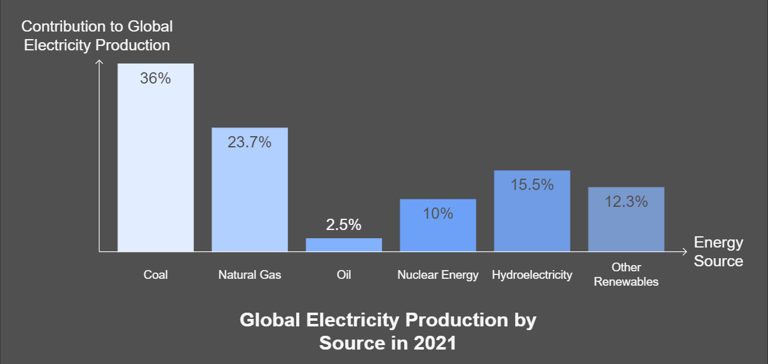

Share the post
Subscribe to our newsletters:
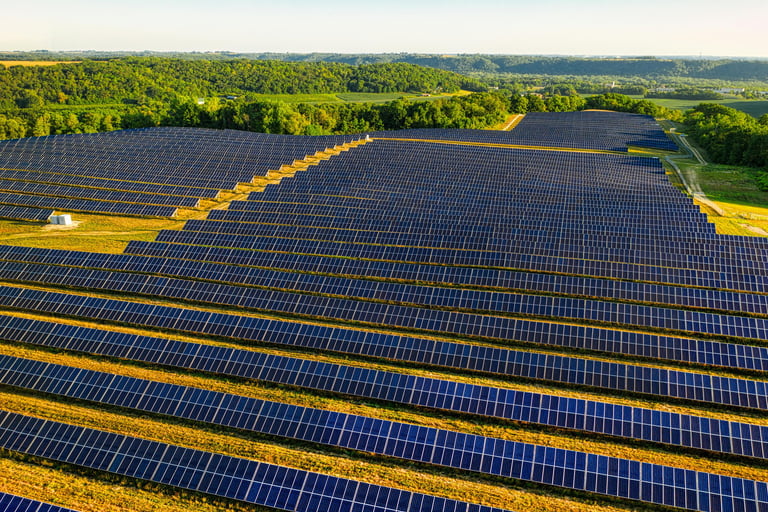

Concentrated Photovoltaic Systems (CPV)
They rely on concentrating sunlight on a small area using lenses or mirrors, and then directing this concentrated light to high-efficiency solar cells. They consist of concentrator mirrors or lenses, solar trackers, and high-efficiency solar cells.
The efficiency of concentrated photovoltaic systems can reach 40% or more, and they are highly efficient in converting solar energy into electricity. They require less space to produce the same amount of energy as conventional systems.
However, they have a higher cost compared to conventional systems, and are sensitive to dust and shadows, requiring regular cleaning. They require advanced manufacturing and installation technology. They work best in areas with high solar radiation.
In general, concentrated photovoltaic systems are the future of solar energy, but they are still in the development stage and require more investment.
The solar energy industry has seen tremendous growth in recent years. As a result, many large solar power plants have been established around the world.


